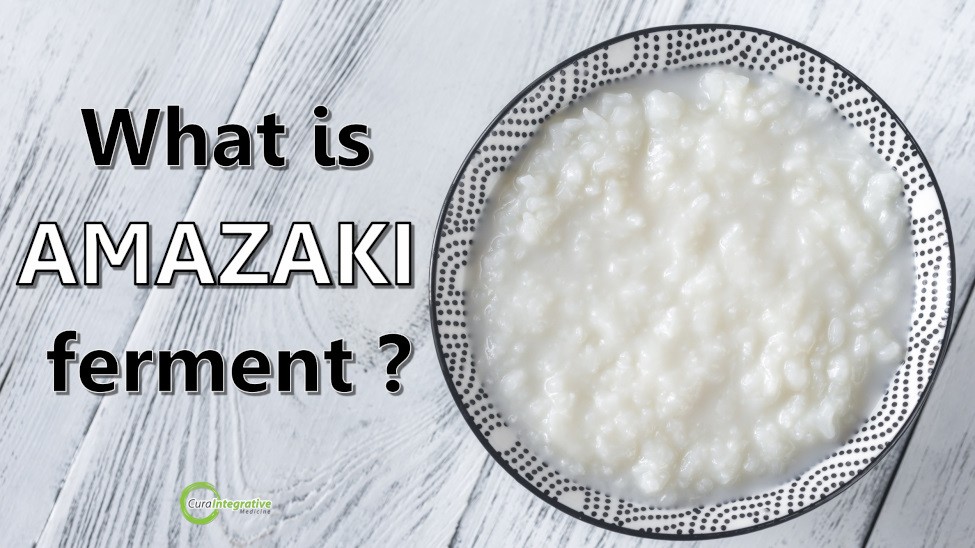Koji is a less known superfood found in a variety of macrobiotic foods. Containing Aspergillus oryzae, koji is used to make foods such as miso, amazaki and tamari. Read More…

Could Mould be the Cause of Your Sickness?
Posted 26 Jun '18
Do you find yourself feeling tired all the time that it seems impossible to make it through your daily routine, and just wished the day would end already? Accompanied by headaches, nausea, vomiting, finding it hard to breathe, and even diarrhea throughout the day. All these, for no apparent reason.
You’ve gone to different doctors, through numerous tests, all turning out negative for any known illness. They may say you’re fine because you don’t look sick, but you just know that you are.
Worse, they may start looking getting you psychological help, thinking you might have some sort of depression or anxiety. It is important to check if you have been exposed to a water-damaged building. These structures are filled with biotoxins that cannot be processed by your body because of your genes. It results to inflammation throughout your body causing you to feel sick all the time, causing Chronic Inflammatory Response Syndrome (CIRS).
Is your Home or Workplace Safe Or Dangerous
Buildings can become dangerous when they have been exposed to water and moisture, that it becomes a host to moulds — fungi, bacteria, mycobacteria, and actinomycetes. A structure can become water-damaged when there’s poor ventilation and HVAC systems, faulty building design, and improper plumbing. It could be your office, your school, a shop or cafe that you frequent, or even, your own home. It may not be the whole building, just a particular room that has become a moisture trap. And continuous exposure to the moulds is making you sicker and sicker everyday. Especially when you are within the area. You may even find that when you go on holiday in a different place, you start feeling better, only for it to come back as you also go back to your old routine.
The interior environment of water-damaged buildings can cause many health issues. The mixture of contaminants and dust in the air becomes toxic. Due to the variety of mixes, no single compound can be concluded as the sole cause, and due to this, the sole cause IS the building itself.
An Overview of Dangerous Compounds
Here are some of the dangerous compounds that impose a threat to your health. The better you understand them, the better you can avoid exposure in the future.
- Fungi. These are organisms that can either be single-celled, or multicellular. They are true pathogens and can be quite opportunistic. They can infect persons regardless of whether they are healthy, or are immunocompromosed.
- Bacteria. These microorganisms are either free-living, or live as parasites, depending on other organisms to thrive. MARCoNS (Multiple Antibiotic Resistant Coagulase Negative Staph) is one such identified problematic bacteria which can be tested via swab tes
- Actinomycetes. They are a group of gram-positive bactera that release bioactive agents. Also called Actinomycetales.
- Mycobacteria. They are large families of bacteria that have waxy cell walls, making them resistant to digestion. Mycoplasmas are examples which cause “walking Pneumonia”
- Mould. It is a term used to refer to several types of fungi that reproduce through spores, and grow in filaments. They may thrive indoors and outdoors, in damp, warm, and humid environments. Usually found indoors are the Cladosporium, Alternaria, Aspergillus, Penicillium, and the Stachybotrys chartarum, or Stachybotrys atra, famously known as the black mould. The Stachybotrys chartarum is greenish-black and grows on wood, fiberboard, gypsum board, and paper — common materials used for surfaces around the house.
- Spore. These are not visible to the naked eye and are producted by moulds. Mould spores are tough, and are able to survive in dry and harsh conditions where mould could not.
- Mycotoxins. These are the toxic chemicals on spores and tiny pieces of fungus and molds as they are released in the atmosphere. Ochratoxin A, Aflatoxin group, Trichothecene group and Gliotoxins can be tested via a Mycotoxin panel.
- Endotoxins. When gram-negative bacteria die, they shed LPS (Lipopolysaccharides) into the air. LPS cause inflammation, releasing inflammatory cytokines into the signaling pathways in the body. It aggravates any existing lung diseases such as asthma.
- Beta Glucans. These are polysaccharides of D-glucose monomers that are joined through beta-glycosidic bonds. They are a diverse group of molecules that have different molecular masses, solubility, viscosity, and configuration.
- Microbial Volatile Organic Compounds. Also called mVOCs, these are the organic compounds that microbes release into the air when there is adequte food supply. They are what is causing the musty odor that you can smell when you go down the basement. Fungi, bacteria and actinomycetes produce these mVOCs.
How are Mould Sickness Misdiagnosed?
Patients may be given differen spot diagnosis by different doctors who have not checked the inflammatory markers that are checked through blood tests. Some common misdiagnosis include:
- Irritable Bowel Syndrome
- Chronic Fatigue Syndrome
- Multiple Sclerosis
- Depression
- Stress
- Allergies to various foods – mould toxins can be found inside foods
- Attention Deficit Disorder (ADD)
- Fibromyalgia
- Post Traumatic Stress Disorder
- Somatization
If you have been diagnosed without proper tests, you may request to get tested for inflammatory markers (C3a, C4a, TGFb-1, MMP-9, VEGF, Leptin, MSH, VIP, ADH) and further testing to get you on the path to health and wellness. You have the right to a healthier you and the right diagnosis. Make an appointment now.





